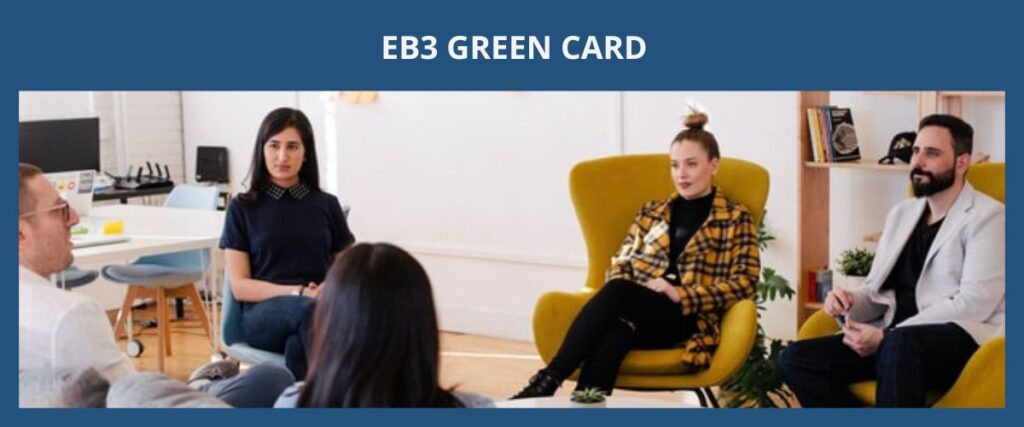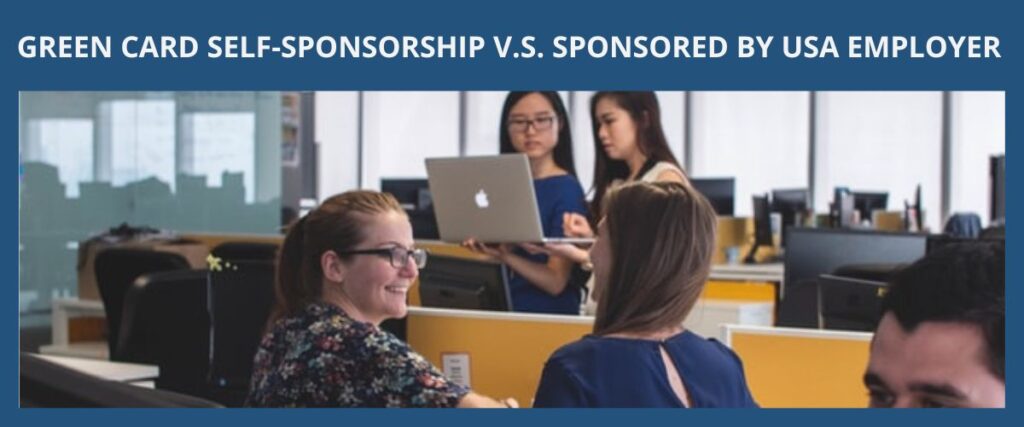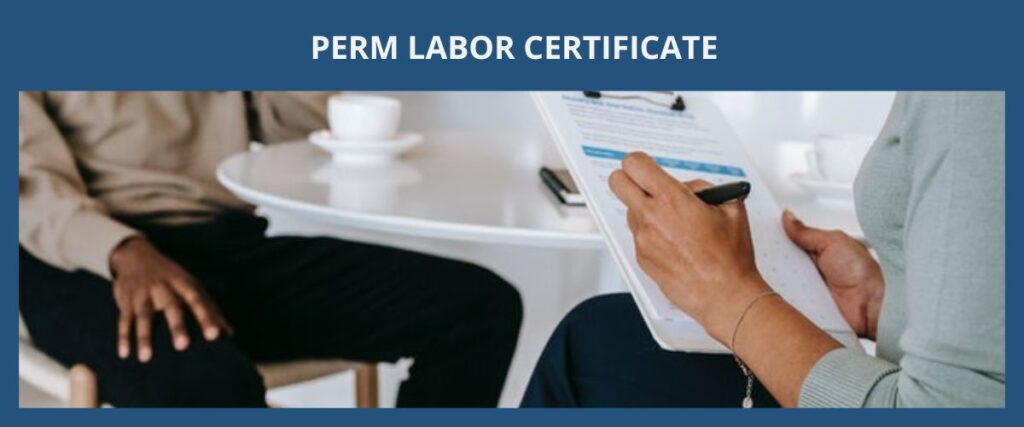A Lawful Permanent Resident (commonly known as a “green card” holder) is a person who has an immigrant visa that allows them to work and live anywhere in the United States. Being a green card holder is also a required step in becoming a U.S. citizen and obtaining a U.S. passport.
One of the most popular ways to obtain a U.S. green card is through an EB3 green card petition where people can qualify by being a professional worker who has at least a Bachelor’s degree with a job offer that requires a bachelor degree under industry norms, or by being a skilled worker who is qualified to perform a job that requires at least 2 years in training or work experience, or by being a worker who is qualified to perform an unskilled job that requires less than 2 years in training or work experience. The job offers must be for permanent full-time positions which means that temporary or seasonal work is not allowed under EB3 green card petitions.
The EB3 green card petition requires a job offer from a U.S. sponsoring employer and an approved PERM labor certification which means that self-sponsorship for an EB3 green card is not permitted. The PERM labor certification is a process where the U.S. Department of Labor tests the labor market to make sure that there are no available and qualified U.S. workers for the job offered to the foreign worker. The one exception for the PERM labor certification requirement under the EB3 green card petition is when the person’s occupation falls under Schedule A.
Table of Contents
There are five main subcategories under the EB3 visa:
- Professionals: Persons who have a bachelor’s degree and a job offer where the position requires a bachelor’s degree under industry norms. The person must also be a member of a profession.
- Skilled Workers: Persons who have the qualifications to perform a permanent full-time job that requires at least 2 years of training or work experience.
- Other Workers (Unskilled Workers): Persons who are able to perform a permanent full-time unskilled job that requires less than 2 years of training or work experience.
- Schedule A Group I (Professional Nurses/Physical Therapists): Persons who are professional nurses or physical therapists that hold an advanced degree. This group is usually used for EB3 green card petitions.
- Schedule A Group II (Exceptional Ability): Persons who have exceptional ability (which is wide acclaim and international recognition) in the performing arts, sciences, or arts. This group is not usually used for EB3 green card petitions (i.e., more frequently used for EB2 green card petitions instead).

A person can qualify for an EB3 green card no matter where they are currently residing in the world. There are no pre-requisites for the person to be under any type of nonimmigrant visa status (such as an H1B visa) or have an educational degree from a U.S. school. A person who does not have a U.S. degree and has never been to the United States can qualify for an EB3 green card.
The EB3 visas are green cards for persons who are (1) professionals that have at least a bachelor’s degree (or its foreign equivalent) and a job offer that requires a bachelor degree under industry norms (EB3 professionals subcategory), (2) skilled workers who have the qualifications to perform a job that requires at least 2 years in training or work experience (EB3 skilled workers subcategory), or (3) other workers who are able to perform an unskilled job that requires less than 2 years in training or work experience (EB3 unskilled workers subcategory).
The EB3 green card petition requires a permanent full-time job offer (i.e., cannot be temporary or seasonal work) from a U.S. sponsoring employer and an approved PERM labor certification. The PERM labor certification is a process where the U.S. Department of Labor tests the market to make sure that there are no available and qualified U.S. workers for the job offered to the foreign worker. The U.S. sponsoring employers would need to make efforts (e.g., posting job advertisements and interviewing U.S. workers who reply) in recruiting U.S. workers and prove that they could not find any to fill the job position offered to the foreign worker. The one exception for the PERM labor certification requirement under the EB3 green card petition is when the person’s occupation falls under Schedule A.
Green cards that require sponsorship from an employer means that the beneficiary (which is the person who will be getting the green card) would need a U.S. employer (e.g., company) to file a green card petition for them and pay the fees related to the green card petition. For example, the EB3 green card petitions are required to be “sponsored” by a U.S. employer which means that the EB3 green card petition has to be started and paid by a U.S. company.
On the contrary, green cards that allow “self-sponsorship” means that a person can file and pay for their own green card application. However, there are no “self-sponsorship” options under the EB3 green card petitions.

The process for EB3 green card petitions requires (1) filing a green card petition (Form I-140, Immigrant Petition for Alien Workers) with the U.S. Citizenship and Immigration Services (“USCIS”), (2) receiving an approved PERM labor certification from the U.S. Department of Labor (“DOL”) unless the occupation falls under Schedule A, and (3) a change of status application by either filing a Form I-485 application with the USCIS or a DS-260 application with the Department of State (“DOS”).
For most EB3 green card petitions, before filing the EB3 green card petition with the USCIS, the U.S. sponsoring employer must obtain a PERM labor certification with the DOL first. The PERM labor certification can be approved by the DOL if the U.S. sponsoring employer shows that it has made efforts in recruiting U.S. workers but failed to find any to fill the job position. The PERM labor certification process with the DOL involves the U.S. employer posting job advertisements on certain recruiting platforms and interviewing U.S. workers who respond to those job advertisements. This PERM labor certification process can be avoided if the person’s occupation falls under Schedule A. After the PERM labor certificate is approved and issued by the DOL, the EB3 green card petition (that includes the approved PERM labor certificate) can then be filed with the USCIS.
Usually, after the approval of the EB3 green card petition (Form I-140), a person who is already residing in the United States will choose to file a Form I-485 application to adjust their current nonimmigrant visa status to a lawful permanent resident (green card) visa status without leaving the United States. The Form I-485 application (“Application to Register Permanent Residence or Adjust Status”) is only available to people who are already in the United States and have maintained their lawful visa status throughout their stay.
A person already residing in the United States also can choose to file a DS-260 application to change into a lawful permanent resident (green card) visa status by going through consular processing at a U.S. embassy or consulate abroad (usually in the person’s home country). In cases where a person is ineligible for adjusting status in the United States or resides outside the United States, consular processing must be done. Consular processing usually takes place at the U.S. consulate or embassy in the person’s home country, however, under certain circumstances the person can do the consular processing in another country as a “Third Country National.”
An interview for the EB3 green card will be done at a local USCIS office for the adjustment of status or at a U.S. consulate or embassy abroad for consular processing. For a person who is already in the United States adjusting their visa status, the interview approval is the final step in obtaining their EB3 green card.
For a person who is outside the United States doing consular processing, the person must physically enter the United States after the interview approval as the final step to obtain their EB3 green card. In other words, a person who is doing consular processing to obtain their EB3 green card must be admitted by the CBP (“Customs and Border Protection”) officer at the U.S. border (usually done in the secondary inspection room at the airport) for their EB3 green card to be issued.
Regular EB3 green card petitions must be “employer sponsored” which means that you would need to have a job offer from a U.S. sponsoring employer and there must be an approved “labor certification” from the U.S. Department of Labor (“DOL”). The PERM labor certificate is a process with the U.S. Department of Labor where the U.S. employer will have to show an effort in trying to hire available and qualified U.S. workers for the job position offered to the foreign worker. The purpose of the PERM labor certification is to make sure that hiring foreign workers will not harm U.S. workers. The PERM labor certification process includes posting job advertisements on certain recruitment platforms and interviewing the U.S. workers who respond to those job postings. An approved PERM labor certification usually takes around 6 to 12 months to complete.
An approved PERM labor certificate should show that (1) there is not enough qualified, available and willing U.S. workers to fill the job position that the foreign worker is being offered, (2) the wage offered should be at least the prevailing wage of the geographical area where the employment will be located, and (3) the hiring of the foreign worker does not adversely affect the terms of wages and working conditions of similarly employed U.S. workers.
The exception to the PERM labor certificate requirement under the EB3 green card petition is when the occupation falls under Schedule A. The occupations under Schedule A are pre-certified by the U.S. Department of Labor as having a shortage in available and qualified U.S. workers, and thus hiring foreign workers in those certain occupations will not harm U.S. workers. Current occupations under Schedule A are: (1) Group I: professional nurses and physical therapists, and (2) Group II: persons of exceptional ability in the performing arts, sciences, or arts.

The main difference between an EB3 green card and a temporary work visa (such as an H1B visa, L1 visa, O1 visa, P1 visa, TN visa, E3 visa) is that an EB3 green card holder can change their jobs freely among different employers or industries without needing additional filings or approvals from the U.S. government. Also, unlike work visas, EB3 green cards are permanent so there is no set maximum time on how long an EB3 green card holder can stay in the United States.
For example, a person with an EB3 green card does not need to file anything new with the USCIS when they change jobs while a person with an H1B visa must have a Change of Employer H1B visa application filed for them because the H1B visa is tied to the specific U.S. employer that is sponsoring the H1B visa itself.
The EB3 visa is one of the most popular and common ways to obtain an employment-based green card. The EB3 green card petitions are filed for persons who are (1) professionals who have a bachelor’s degree and has a job offer for a position that requires at least a bachelor’s degree, (2) skilled workers who can perform a job that requires at least 2 years of training or work experience, or (3) other workers who can perform an unskilled job that requires less than 2 years of training or work experience. Most EB3 green card petitions require (1) a job offer from a U.S. employer that is willing to sponsor the green card, and (2) an approved “PERM labor certification” from the U.S. Department of Labor unless the job position falls under an occupation under Schedule A.
If you have an EB3 green card (Professionals, Skilled Workers, Unskilled Workers) immigration question, please fill out our contact us form or send us an email with some basic information about your background and your immigration needs. We will do our best to respond within 48 hours.
How we can help?
Kylie Huang Law’s immigration attorney will help identify whether the EB3 green card is the appropriate immigrant visa category for the client’s (or the client’s beneficiary’s) professional background. We will work closely with our client to prepare a convincing case for their (or it’s) EB3 green card petition and we will also strategize on how the EB3 green card petition should be presented to achieve the best chances of approval. It is strongly advised and common practice to retain an immigration attorney for an EB3 green card petition due to the complexities in the immigration process and visa requirements.
What does the typical process look like to retain (hire) us?
- Step 1:
- Step 2:
- Step 3:
- Step 4:
- Step 5:
- a.
- b.
- c.
- Step 6:
- Step 7:
- Step 8:
- Fill out the form (with some basic information on what your immigration needs are)
- Sign up and log into the client portal to schedule an appointment online
- Attend scheduled appointment (typically a phone call or zoom meeting)
- Retainment (signing a contract to hire us)
- Start processing case
- Gathering required documents
- Preparing paperwork
- Confirming contents of documents that will be submitted
- Filing the case
- Following up on the status of the case
- Close the case when a final determination is issued
- Step 1:
- Step 2:
- Step 3:
- Step 4:
- Step 5:
- a.
- b.
- c.
- Step 6:
- Step 7:
- Step 8:
- Fill out the form (on what your immigration needs are)
- Sign up and log into the client portal to schedule an appointment
- Attend scheduled appointment (typically a phone call or zoom)
- Retainment (signing a contract to hire us)
- Start processing case
- Gathering required documents
- Preparing paperwork
- Confirming contents of documents that will be submitted
- Filing the case
- Following up on the status of the case
- Close the case when a final determination is issued
- Step 1:
- Step 2:
- Step 3:
- Step 4:
- Step 5:
- a.
- b.
- c.
- Step 6:
- Step 7:
- Step 8:
- Fill out the form (on what your immigration needs are)
- Sign up and log into the client portal to schedule appointment
- Attend scheduled appointment (typically a phone call or zoom)
- Retainment (hire us)
- Start processing case
- Gathering required documents
- Preparing paperwork
- Confirming content of documents that will be submitted
- Filing the case
- Following up on the case status
- Close the case when a final determination is issued

